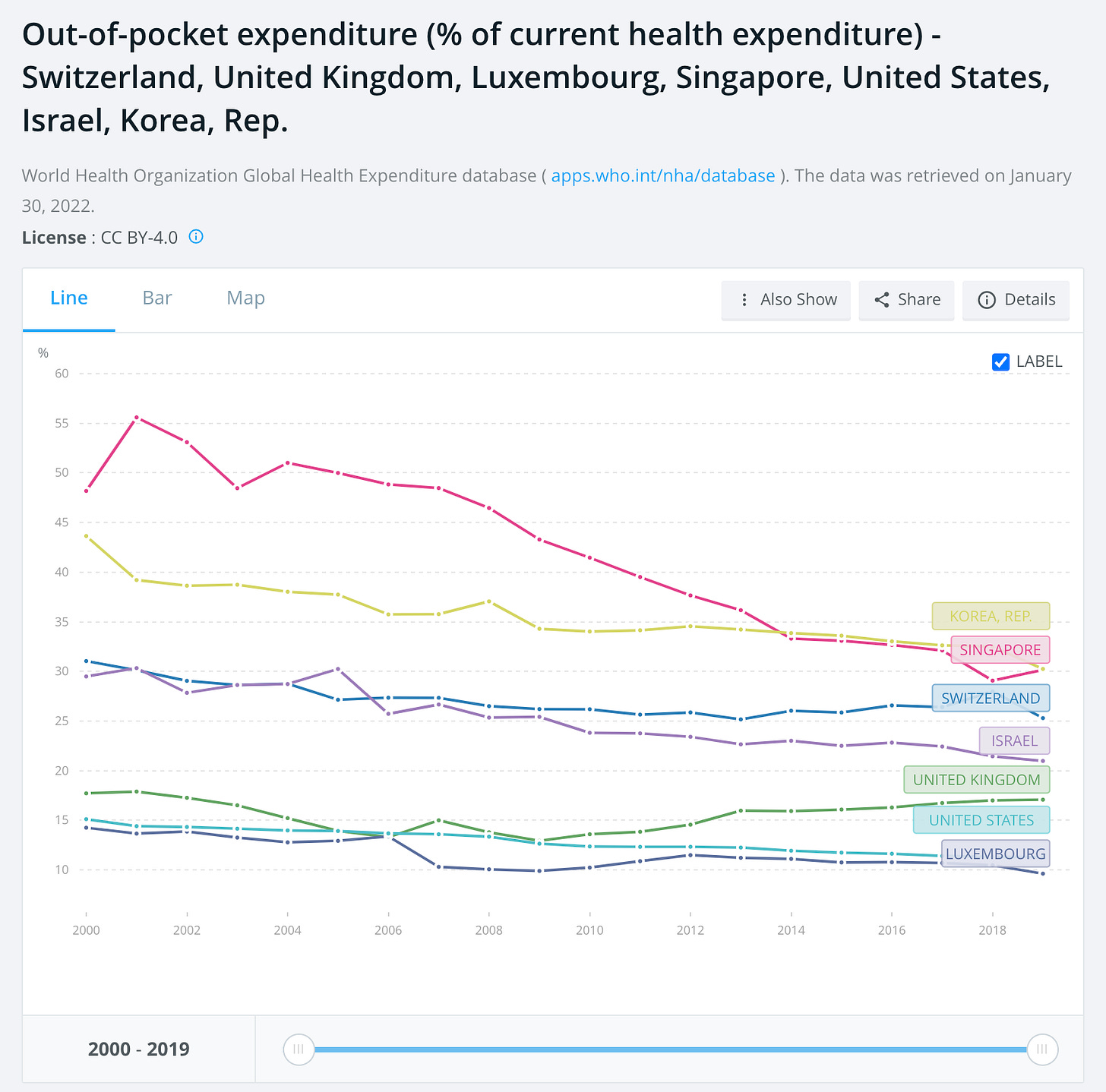Short definition: cost disease socialism is when government policy creates incentives and restrictions that result in artificial scarcity for human-capital-intensive industries, causing prices to rise dramatically over time.
Longer definition: cost disease socialism happens in a few parts
Restrict supply by subsidising suppliers and heavily regulating them. Choosing who the winners are, pressuring losers to leave the industry and setting high costs for new entrants. For example, ‘certificate of need’ restricting new hospitals or doctors setting up an office in a town or city, while subsidising existing hospitals in the same town or city.
Typically, the types of industries will be human-capital intensive where wages may rise due to the overall economy being more productive and competition for labour, but not that those industries themselves are more productive.
The government will increase demand, by diffusing costs to the general population. For example offering government backed cheap student loans. This takes these industries away from competitive pressures from participating in a market and removes the pressure of lowering costs.
Without the needs to compete, innovation and increased productivity is less likely to happen. Equally, scaling up or providing a good quality service would not be a priority. For example, the DMV.
At some point, costs rise more and more and the government starts paying them through deficit spending.
The increases in costs tend to become a substantial cost to the middle class and the poor, who will then ask the government to intervene in the markets to help them (Government growth spiral). For example, in the 1960s, most people would pay out-of-pocket for healthcare costs, but those costs are so high currently that they require insurance to cover them and people are asking the government to step in and absorb the costs.
Both the left and the right keep this spiral going. It is politically convenient for them to blame the higher prices on populist reasons. For the left, it is the rich capitalists who don’t pay their fair share and make it harder for the government to pay for these services. For the right, it is immigrants who use these services and increase their costs.
Ironically, higher prices in these sectors also prevent governments from nationalising them. It would simply be too expensive and politically unfeasible to do so. For example, in early 2022, California expressed a desire to implement single payer healthcare in the state. However, despite having a super democrat majority and $55billion tax surplus, they couldn’t implement this desire.
Equally, price rises in these areas translate into higher government spending.
More info:
https://americanaffairsjournal.org/2022/02/cost-disease-socialism/
https://www.niskanencenter.org/wp-content/uploads/2021/09/Cost-Disease-Socialism.pdf















